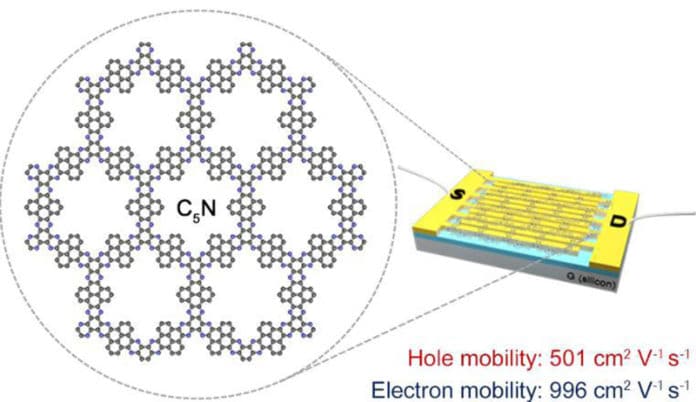Organic semiconductors used to create rollable displays or wearable devices have low charge carrier mobility that affects the performance and applicability of devices. But, this issue has been addressed by UNIST scientists. They did this by enhancing the charge carrier mobility in organic semiconductors.
Scientists successfully designed and synthesized fused aromatic network (FAN) structures using C5N basal plane stoichiometry. They also cast thin films from C5N solution onto silicon dioxide substrates.
To characterize the electrical properties of films, field-effect transistors (FETs) using C5N thin films as an active layer were also fabricated in a bottom-gate top-contact configuration.
C5N thin films exhibit ambipolar charge transport and extraordinarily high electron and hole mobilities. These characteristics help surpass the performance of most pristine organic materials without doping.
Scientists noted, “Such findings demonstrate their vast potential for applications in thin‐film optoelectronic devices.”
In this study, scientists also found that the conductive thin films are also environmentally stable against oxidation and thermal degradation. Among 2D layered organic materials, this material exhibited high charge carrier mobilities without doping and superior conductivity even after doping with HCl at 160 °C.
Professor Jong‐Beom Baek said, “Our findings demonstrate their vast potential for applications in thin‐film optoelectronic devices. Therefore, the current research constitutes a significant leap in the design and further enhancement of stable 2D-based organic structures.”
Journal Reference:
- Javeed Mahmood Eun Kwang Lee Hyuk‐Jun Noh, et al., “Fused Aromatic Network with Exceptionally High Carrier Mobility,” Advanced Materials, (2021). DOI: 10.1002/adma.202004707
